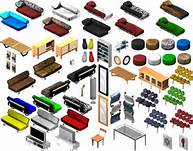By Pebble Haniford, student, IU South Bend Foundations of Sustainability class
Ikea has been a long standing favorite of mine as a provider for home goods. I appreciate the vision of creating and providing the masses of everyday people with well designed, affordable products. In addition, it was clear to me early on that it was a company that valued not only reaching a vast amount of potential customers, but the impact that it and its products had on the environment it functioned in as well. As Kamprad (the founder of Ikea) stated, “What is good for our customers is also good for us in the long run.”
![]() I remember reading about the initiatives that Ikea was making with regard to formaldehyde emissions and was impressed that they not only took prompt steps to rectify the problem, but went above and beyond the highest standards present at the time. This prevention vs treatment (or reaction) approach can be seen in most of their processes, including the company wide, all-inclusive, environment of education that is promoted, from the “lowest” employee to the upper echelon of directors. Ikea has taken the responsibility of educating even their suppliers, or at least those that are willing to participate. The company looks for and uses only those suppliers that meet their standards in sustainability and eco-friendly approaches. In order to reduce the negative footprint that transportation inevitably creates, Ikea also attempts to locate suppliers that are either close to the source of production, distribution, or in between the two. Regarding transportation, the company has a variety of other instruments in their sustainable toolbox, that reduce their environmental impact.
I remember reading about the initiatives that Ikea was making with regard to formaldehyde emissions and was impressed that they not only took prompt steps to rectify the problem, but went above and beyond the highest standards present at the time. This prevention vs treatment (or reaction) approach can be seen in most of their processes, including the company wide, all-inclusive, environment of education that is promoted, from the “lowest” employee to the upper echelon of directors. Ikea has taken the responsibility of educating even their suppliers, or at least those that are willing to participate. The company looks for and uses only those suppliers that meet their standards in sustainability and eco-friendly approaches. In order to reduce the negative footprint that transportation inevitably creates, Ikea also attempts to locate suppliers that are either close to the source of production, distribution, or in between the two. Regarding transportation, the company has a variety of other instruments in their sustainable toolbox, that reduce their environmental impact.
Many of the stores throughout the world include recycling centers, reflecting their “Trash is Cash” motto. Ikea’s “goal is to reach 100% sorting/recycling within a few years. There also is a prototype in use for on-site composting of restaurant waste.”[1] Some stores offer on-site recycling of old furniture if brought in when buying new Ikea furniture. This process, if utilized correctly, would be an effective tool in implementing a more closed-loop system of production. As it stands today, the company takes steps to insure that the packaging and shipping materials are easily recyclable by using “pure” (nonmixed) materials that allow for easier sorting & recycling (no monster-hybrid packaging materials), as well as using only recyclable materials for flat packaging. In fact, you can even find a version of an Ikea chair that is made from 100% recycled pre-consumer plastic waste.
The stores, while they are giant, behemoth warehouse structures, are open, airy, and inviting. There seems to be a nice amount of natural light on each level as well. Even though Ikea stores are designed to minimize the time needed for employee participation, it is never difficult to gain assistance. Some stores also offer child care to aid in making the shopping event less stressful for parents and children alike.
 Now, I must admit, I am not your average rabid consumer that believes every green-washed piece of propaganda that hits the media. However, if I do need a new slipcover for our sofa, bookshelves for the library, or even a sink for a newly installed bathroom, I would rather make a day trip to the nearest Ikea store than support a closer alternative that does not have a sustainability plan, does not show evidence of caring about more than the economic bottom line, or can provide verification that their products are either made from recycled materials or can eventually be recycled themselves. I choose to support those businesses that support sustainability. While there are many points of weakness within Ikea’s framework, they are making realistic and effective efforts and continuing to improve rather than refusing to progress. As a citizen with purchasing power, I choose to reward innovation and deny support to those who choose stagnation.
Now, I must admit, I am not your average rabid consumer that believes every green-washed piece of propaganda that hits the media. However, if I do need a new slipcover for our sofa, bookshelves for the library, or even a sink for a newly installed bathroom, I would rather make a day trip to the nearest Ikea store than support a closer alternative that does not have a sustainability plan, does not show evidence of caring about more than the economic bottom line, or can provide verification that their products are either made from recycled materials or can eventually be recycled themselves. I choose to support those businesses that support sustainability. While there are many points of weakness within Ikea’s framework, they are making realistic and effective efforts and continuing to improve rather than refusing to progress. As a citizen with purchasing power, I choose to reward innovation and deny support to those who choose stagnation.
[1] The Natural Step. Web. 2 Apr 2013.
Leave a Reply